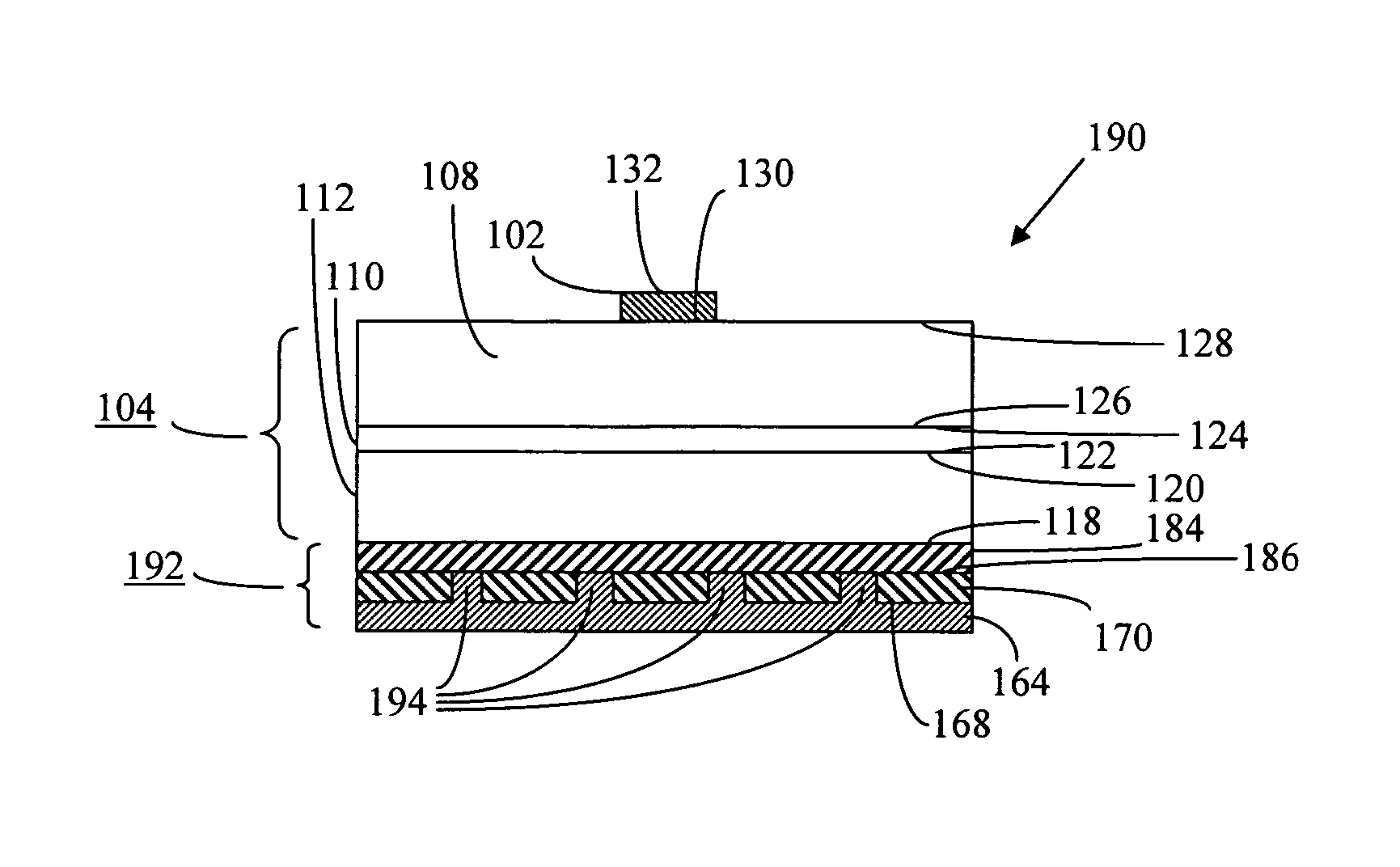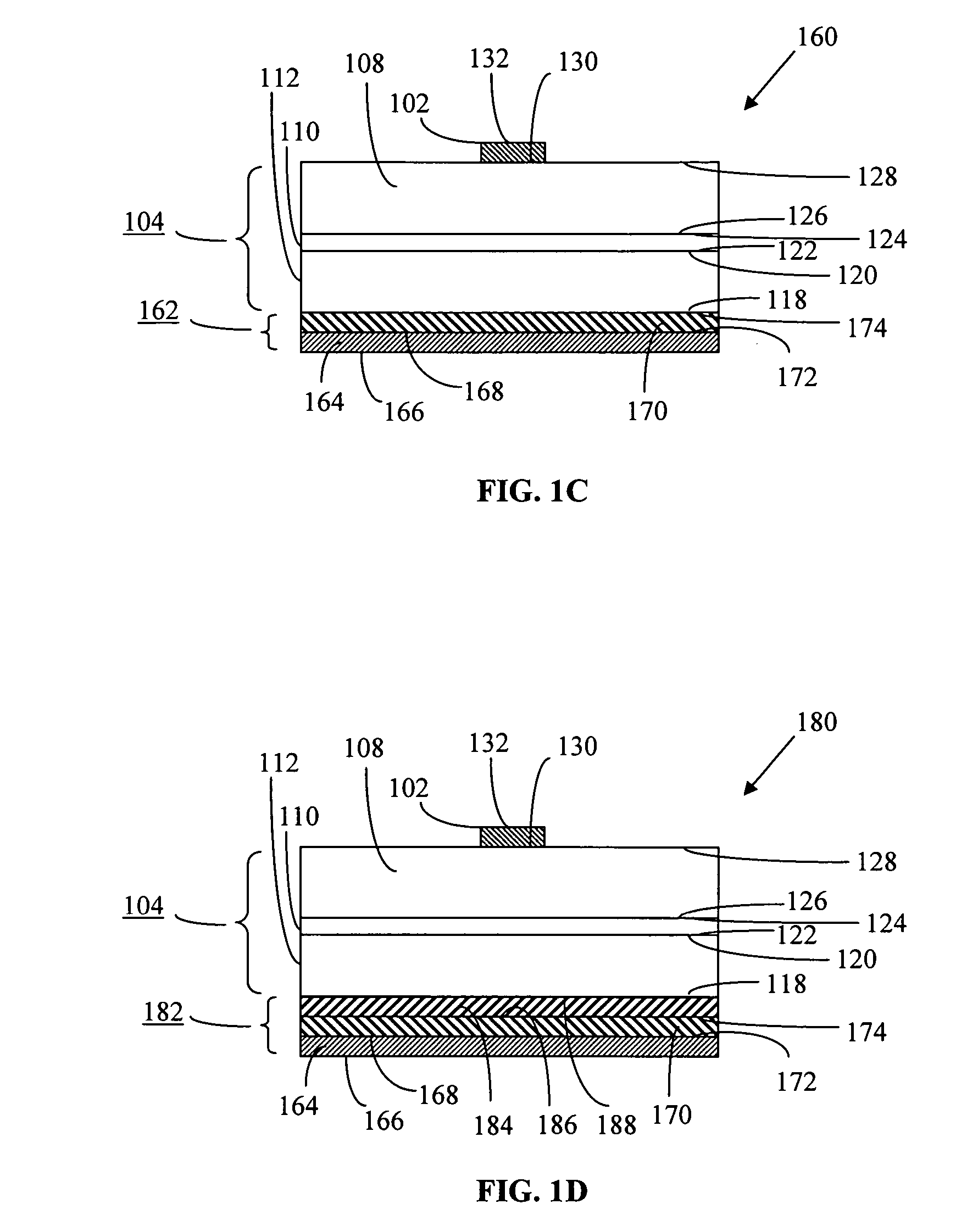Light emitting diodes with high light extraction and high reflectivity
a light-emitting diode and high reflectivity technology, applied in the direction of basic electric elements, electrical equipment, semiconductor devices, etc., can solve the problems of low external quantum efficiency of many types of leds, lack of sufficient brightness for demanding applications, and inability to achieve this level of output power, etc., to achieve greater light extraction efficiency and improve the extraction efficiency of internally generated ligh
- Summary
- Abstract
- Description
- Claims
- Application Information
AI Technical Summary
Benefits of technology
Problems solved by technology
Method used
Image
Examples
example 2
[0121] In this example, the reflectivity and extraction efficiency of commercially available LEDs are compared to the preferred embodiments of this invention illustrated in Example 1. Referring to FIG. 6, GaN-based LEDs fabricated on sapphire substrates and manufactured by Lumileds under the product name Luxeon V™ have values of reflectivity and extraction efficiency approximately in the range bounded by the shaded area 602. For example, a Luxeon V™ Lambertian emitter that is not encapsulated with a polymer overcoat has a reflectivity of approximately 70% to 85% (depending on the wavelength of the reflected light) and extraction efficiency estimated to be approximately 10%. A Luxeon V™ Lambertian emitter that is encapsulated with a dome of polymer has a reflectivity of approximately 70% to 85% (depending on the wavelength of the reflected light) and extraction efficiency estimated to be approximately 20%. The Luxeon V™ Lambertian emitters have relatively high reflectivity, but at th...
PUM
 Login to View More
Login to View More Abstract
Description
Claims
Application Information
 Login to View More
Login to View More - R&D
- Intellectual Property
- Life Sciences
- Materials
- Tech Scout
- Unparalleled Data Quality
- Higher Quality Content
- 60% Fewer Hallucinations
Browse by: Latest US Patents, China's latest patents, Technical Efficacy Thesaurus, Application Domain, Technology Topic, Popular Technical Reports.
© 2025 PatSnap. All rights reserved.Legal|Privacy policy|Modern Slavery Act Transparency Statement|Sitemap|About US| Contact US: help@patsnap.com



